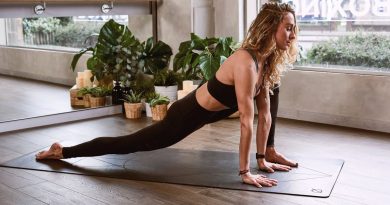The Common Causes of Blood Clots and How to Prevent Them
Blood continuously flows throughout the body and has the capability to shut off that flow to prevent excessive bleeding when you experience a cut or an injury. This practice is similar to the formation of blood clots, which can be lifesaving to prevent bleeding following an injury. However, blood clots can form when it’s not needed by the body, which can lead to a host of medical problems such as a heart attack or stroke.
Blood clots form a mass and have the ability to travel to other areas of the body, which is when the clots become a risk. So, what triggers blood clots and how can they be prevented? Read on for some common causes, such as inactivity and health conditions, and a few tips on prevention, such as wearing compression socks.
Contents [hide]
Body Inactivity
Physical inactivity is a common trigger for blood clots. Sitting for long periods of time, particularly when traveling in a car, plane, or train can trigger blood clots. Sometimes it can take three to four hours of sitting, which might not be considered a long period of time.
Blood clots can occur when you aren’t getting enough activity inside the home as well. If you’re sick from an illness or recovering from surgery and find yourself bedridden, not enough movement could result in blood clots. Or, simply sitting for too much and getting a limited amount of activity can trigger clots.
Certain Types of Medications
There are certain types of medications that can affect the clotting process. The drugs stop the blood platelets from signaling each other which results in them sticking together. These medications include Aspirin, Clopidogrel, Dipyridamole, Prasugrel, Ticagrelor, or Ticlopidine. Birth control and hormone replacement therapy are also commonly associated with the risk of blood clotting. If you’re taking or are planning to take any of these drugs, speak with your doctor to discuss the potential for blood clots.
Health-Related Conditions
Some health-related conditions increase the risk of blood clots. Health factors include obesity, pregnancy, post-surgery, family history of blood clots, smoking, and more. Health conditions can include COVID-19, deep vein thrombosis (DVT), heart arrhythmia, heart attack, heart failure, pulmonary embolism, stroke, and more. Age can also be a common factor in experiencing blood clots.
Tips for Preventing Blood Clots
If you have concerns about your risk for blood clots, it’s always a great idea to speak with your doctor. This is especially important if you’re taking medications that could increase your risk of clotting or if you have health-related issues that put you at higher risk.
If you’re pregnant or post-surgery, compression socks are a great method for preventing blood clots. Particularly in pregnancy, you can experience swelling in the legs and feet. Compression socks help increase the circulation of blood flow to reduce swelling, soreness, and inflammation.
Compression socks aren’t just useful for pregnant people or those recovering from surgery, these socks work well for individuals on long road trips or flights and people who work from home and sit for hours at a time. It’s a great alternative to increasing blood flow if you’re not able to move around and be active.
If you are someone that doesn’t get a lot of activity on a daily basis or you know you’ll be traveling and want to prevent clotting, increase your movement. Whether you work from home or you’re home often, keep yourself moving. Go for frequent walks, stand up regularly, and generally move your body to prevent clotting.
If you’re traveling, take frequent breaks. It can seem tedious, but try to stop at least once every 1–2 hours to move your body. This, of course, primarily works if you’re traveling by car or train, where it’s easy to move around. When you’re flying, it might not be as easy to walk around, so you’ll definitely want to add compression socks to your packing list when planning an aerial excursion.
Another tip anyone can use to prevent clotting is to drink plenty of water. Dehydration can cause blood clots to form so make sure you’re staying hydrated.
Conclusion
Blood clotting can be incredibly risky. If you’re proactive in addressing the root causes of clotting, you’re able to take the steps you need to prevent it. Talking with your doctor is always the right idea to get a good handle on addressing the risks and taking proper precautions. And, there are some great options you can easily execute on your own to reduce your risks.




